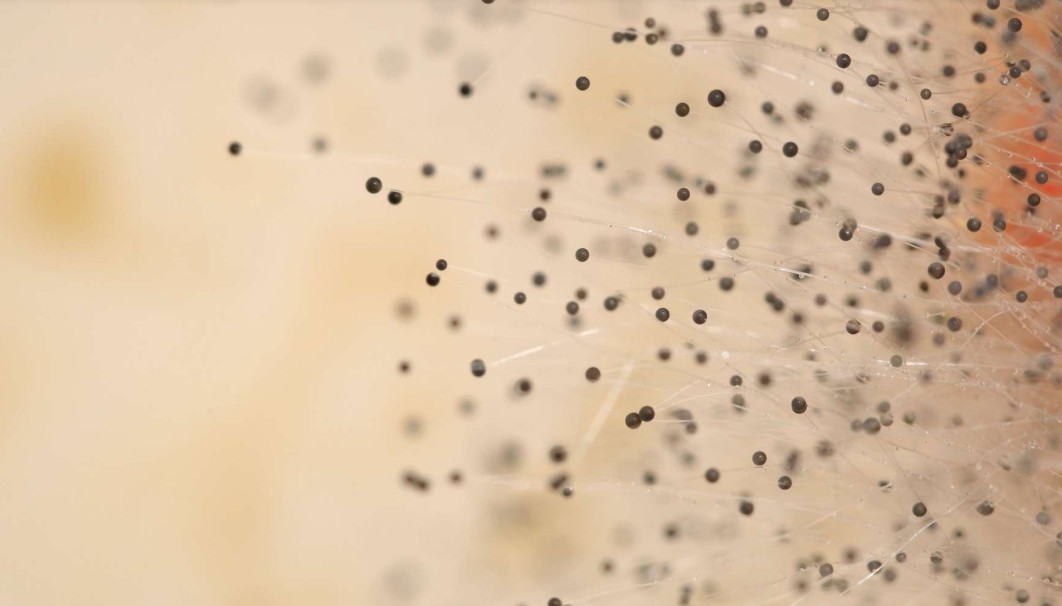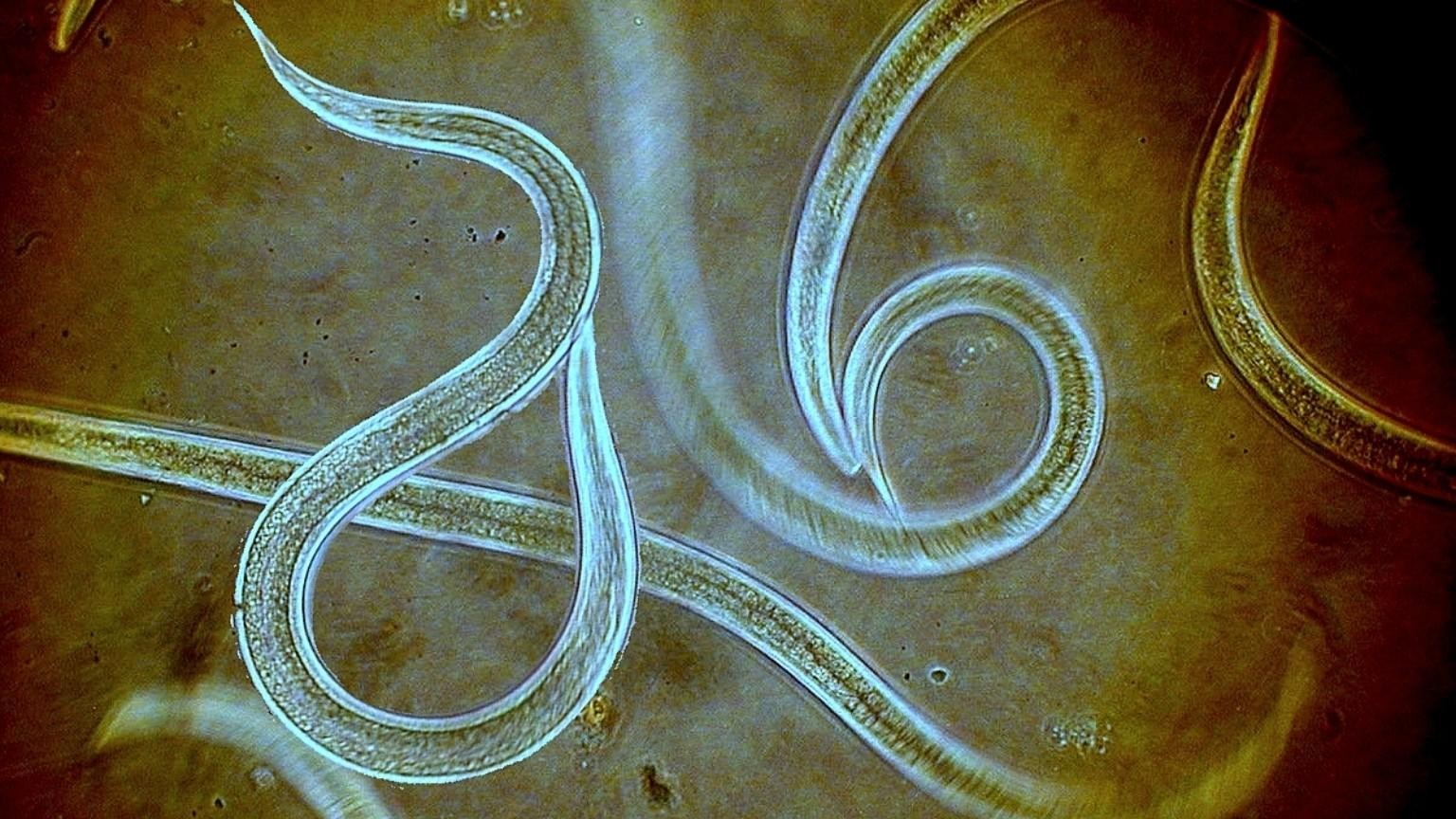Over the years, we’ve noticed a rise in fight-or-flight, or sympathetic dominance, in our practice. This often correlates with lower vagus nerve function. The vagus nerve, also known as cranial nerve X, is often referred to as the “wandering nerve” because it extends from the neck, traveling alongside the carotid arteries and connecting with almost every major organ. This crucial nerve creates a bidirectional communication pathway, sending messages from the brain to the organs and vice versa. Essentially, the vagus nerve is a vital component of the “gut-brain connection.”
Unfortunately, the vagus nerve can easily be compromised by stress, lack of sleep, and chronic illnesses such as mold and Lyme disease. When this happens, symptoms like elevated heart rate, insomnia, anxiety, depression, fatigue, and inflammation often emerge. Our patients who remain in chronic sympathetic dominance may struggle with detoxification, no matter how many binders or infrared sauna sessions they try. Thus, addressing vagal regulation is paramount.
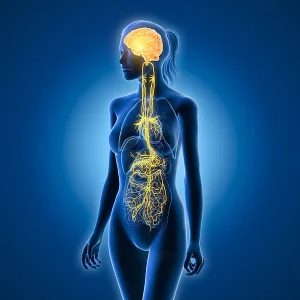
The Origins of Polyvagal Theory
Understanding vagus nerve function can be further enriched through Polyvagal Theory, developed by Dr. Stephen Porges. This theory explains how the vagus nerve influences our emotional and physiological states, especially in response to safety and threat. Polyvagal Theory proposes that the vagus nerve is essential for creating a sense of safety, which is foundational for healing and relaxation. Feelings of unsafety—whether due to trauma, toxins, infections, or even psychosocial stressors like unhappy relationships—can drive the nervous system toward a chronic state of vigilance, disrupting vagal function. By addressing and reducing these stressors, we can help individuals experience a sense of safety, facilitating vagal healing.
The Gut-Brain Connection and Digestive Disorders
In recent years, we have seen an explosion of digestive conditions like Small Intestinal Bacterial Overgrowth (SIBO), Irritable Bowel Syndrome (IBS), and ulcerative colitis in our practice. Much of this may be attributed to vagal nerve dysfunction, as the vagus nerve plays a central role in gut motility, digestion, and immune responses. When vagal function is impaired, gut health suffers, potentially leading to imbalances in gut bacteria, slowed motility, and weakened immune defenses. Addressing vagus nerve health may be essential for managing and improving these digestive issues.
Detecting Vagal Dysfunction
To assess vagal health, we use advanced heart rate variability (HRV) testing, which measures autonomic balance between the sympathetic and parasympathetic systems. HRV reflects the beat-to-beat variations in heart rate, with higher variability indicating a relaxed system and healthy vagal tone. Low HRV, however, often signals sympathetic dominance and reduced vagus nerve function.
This is the Heart Rate Variability of a person in a more relaxed state
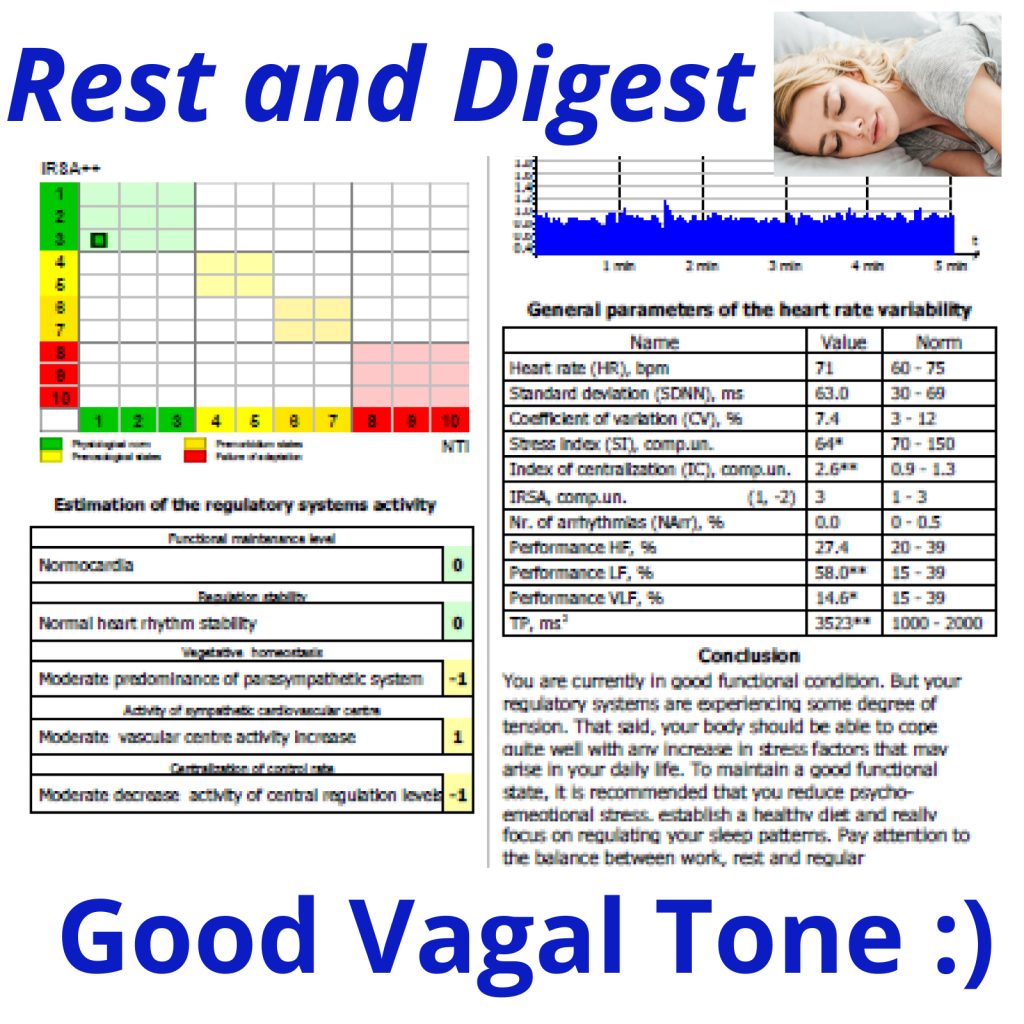
This is the HRV of someone in sympathetic dominance, or flight or flight.
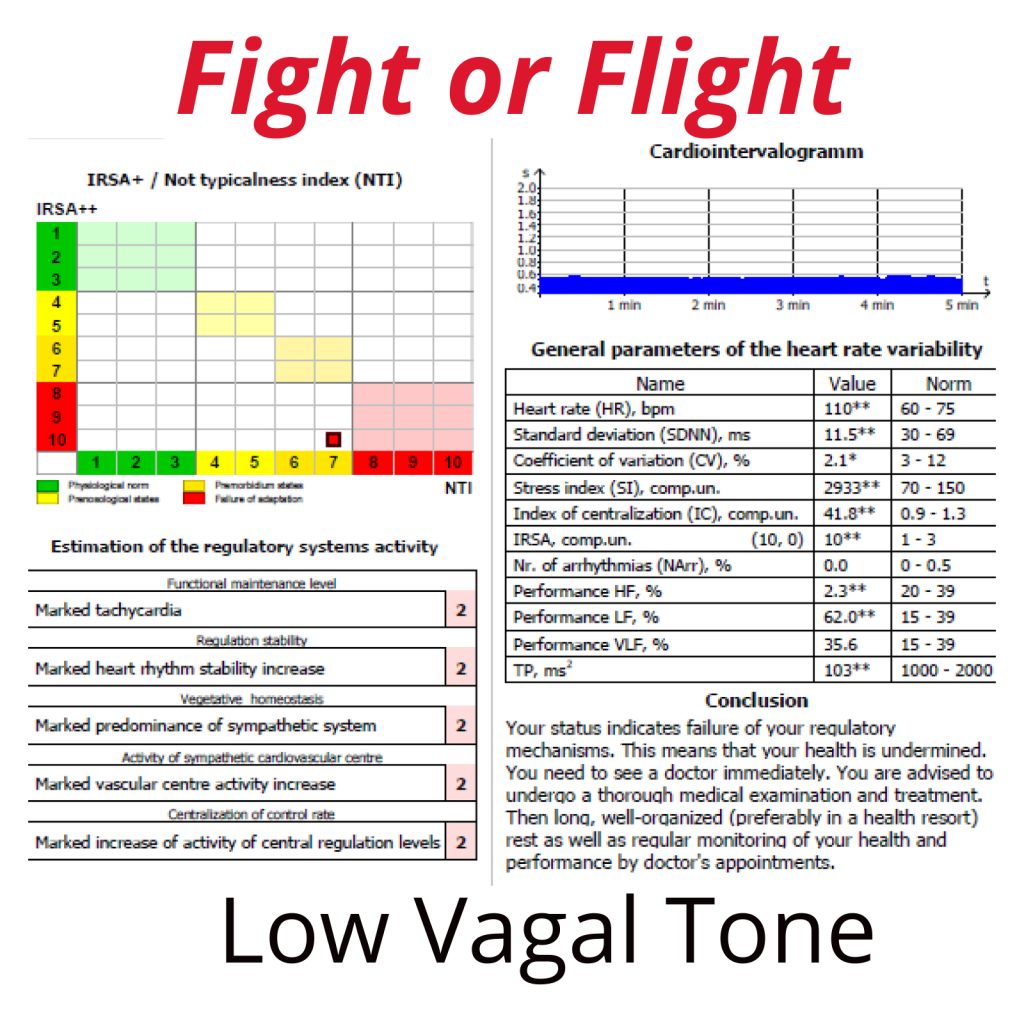
Supporting the Vagus Nerve
We use several strategies to support vagal health, ranging from nutritional support to therapeutic devices. One of our most effective supplements is a form of carnosine imported from the Czech Republic, which helps shift the body from sympathetic to parasympathetic mode, often within hours.
Carnosine’s benefits extend beyond vagal support; it also promotes muscle building, anti-aging, and antioxidant support.
Frequency-Specific Microcurrent for Vagal and Concussion Support
Frequency-Specific Microcurrent (FSM) is a remarkable treatment modality for chronic conditions. It involves delivering tiny, imperceptible electrical currents (microcurrent, in the thousandths of an ampere) to specific areas of the body, which helps stimulate healing. Each FSM program can be customized with different frequencies, and one of the most beneficial programs for vagal health is the “Vagus and Concussion Support” protocol.
Many people may not realize that even without a traumatic brain injury (TBI), experiences such as PTSD, emotional trauma, and the chronic stress of illness can trigger a “concussion message” in the nervous system, promoting sympathetic overdrive. This overactivity impairs the vagus nerve and can intensify stress responses. Using the FSM concussion and vagal nerve protocol, especially early in a chronic illness journey, can be transformative. It gently guides the nervous system into a parasympathetic, restful state, facilitating better healing and relaxation.
A typical FSM session in our clinic involves assessing your body’s response to frequencies tailored for relaxation, vagal support, and concussion stress. These sessions last about 90 minutes, during which most patients drift into a deep, restful state, awakening with a greater sense of calm and resilience. For those who prefer home-based support, we can program an FSM device for overnight use. While you sleep, it can stimulate vagus nerve function and help with issues like insomnia, depression, Lyme disease, and mold illness. (Please note: Microcurrent is FDA-approved only for pain management, and these statements have not been evaluated by the FDA.)
Limbic System Retraining with Primal Trust

Chronic vagal nerve dysfunction is often linked to limbic system overactivation. The limbic system, which includes the amygdala, hippocampus, and parts of the prefrontal cortex, is deeply involved in emotional responses, particularly those related to stress and trauma. Limbic system retraining, especially through programs like Primal Trust, can help recalibrate the brain’s stress response and reduce the “fight-or flight” dominance that can weaken vagal function. Primal Trust combines neuroplasticity exercises, self regulation techniques, and mind-body practices to help patients shift from sympathetic overdrive to a state that supports vagal and parasympathetic activation, aiding healing on multiple levels.
Thiamine (Vitamin B1) and Vagal Nerve Health
Vitamin B1, or thiamine, is crucial for energy production, nerve function, and cellular health, all of which support vagal nerve function. Thiamine’s role in carbohydrate metabolism means it directly fuels the nervous system, which requires constant energy for optimal performance. While beneficial, high-dose thiamine must be approached cautiously, especially for individuals with chronic illnesses or sensitivities. Working with a practitioner is essential to tailor dosing and monitor for any sensitivities or adverse effects. Learn more about thiamine and its potential impact on health in our detailed article on thiamine deficiency.
Home Practices for Vagal Stimulation
Simple daily practices can also help stimulate the vagus nerve and can be incorporated into your routine:
- Breathing exercises: Slow, deep breathing can activate the parasympathetic response.
- Singing, humming, and music: Engaging in these activities stimulates the vagus nerve and aids relaxation.
- Infrared sauna: The heat from infrared saunas triggers heat shock proteins, which help in vagal stimulation and can promote relaxation and parasympathetic balance.
- Coffee enemas: Often overlooked, coffee enemas can stimulate the vagus nerve, enhancing gut motility and boosting glutathione, an important antioxidant involved in detoxification.
- Cold Plunge: Similar to infrared sauna’s, cold plunging activates heat shock proteins and promotes vagal tone.
Addressing Infections and Toxins
Chronic infections like Epstein-Barr virus, mold exposure, and Lyme disease can severely disrupt vagal function. Our Autonomic Response Testing (ART) allows us to detect these underlying issues and understand whether supplements will help or hinder vagal function. By addressing these root causes, vagal health can be restored, allowing other vagus-supportive practices to work more effectively.
Vagal Support Devices
Several devices effectively stimulate the vagus nerve, providing almost immediate relaxation and lowering heart rate. Here are some top choices:
- CES Ultra: Effective for anxiety and insomnia, the CES Ultra is easy to use and available for rental in our clinic. This device has been FDA-registered for its role in stress-related disorders.
- Pulsetto: A more affordable device that stimulates the vagus nerve with simple, user-friendly settings.
- Truvaga: Another direct stimulator priced similarly, ideal for those seeking home-based support.
- GammaCore: Known for its research-backed effectiveness, this device requires a prescription and provides vagal stimulation in just a few minutes per session.
- NuCalm: A subscription service that combines sound therapy and energy technologies to help promote relaxation and vagal balance.
- Brain Tap and Safe and Sound Protocol: Available with certified practitioners, these tools offer structured, guided support for deep relaxation and vagal health enhancement.
The Acetylcholine Pathway and Nicotine Patches
Emerging research suggests that, although not typically used for vagus nerve support, nicotine patches may stimulate the acetylcholine pathway. Acetylcholine is the primary neurotransmitter involved in the parasympathetic nervous system and supports vagus nerve function. Some studies indicate nicotine patches could potentially benefit individuals with vagus nerve dysfunction by promoting acetylcholine activity, though this is not a substitute for medical advice and should be used under guidance.
Conclusion
Supporting the vagus nerve can significantly impact symptoms like anxiety, depression, and sleep disturbances, all of which affect overall health. By addressing underlying factors such as chronic infections and toxic exposures, we can help restore vagal health. Incorporating simple home practices, alongside advanced devices and therapies, can offer a comprehensive approach to improving vagal tone and promoting healing.
For more information on supporting your vagus nerve, check out Dr. Navaz Habib’s book, Upgrade Your Vagus Nerve and tune in to Resiliency Radio with Dr. Jill: Activate Your Vagus Nerve for Better Health w/ Dr. Navaz Habib.
Martin Van Lear, APRN, MSN, ABAAHP, FNP-C
References
- Brunyé, T.T., et al. “A Critical Review of Cranial Electrotherapy Stimulation for Neuromodulation in Clinical and Non-clinical Samples.” Frontiers in Human Neuroscience, 2021.
- Dr. Kharrazian. “Vagus Nerve Causing Gut Symptoms? 4 Vagus Exercises to Help Heal Your Gut.” Dr. K. News, 2020. Available from: drknews.com.
- Pulsetto
- Truvaga
- GammaCore
- NuCalm
- Brain Tap
- Safe and Sound Protocol
- Frequency-Specific Microcurrent Article
- Thiamine Deficiency and Vagal Health


